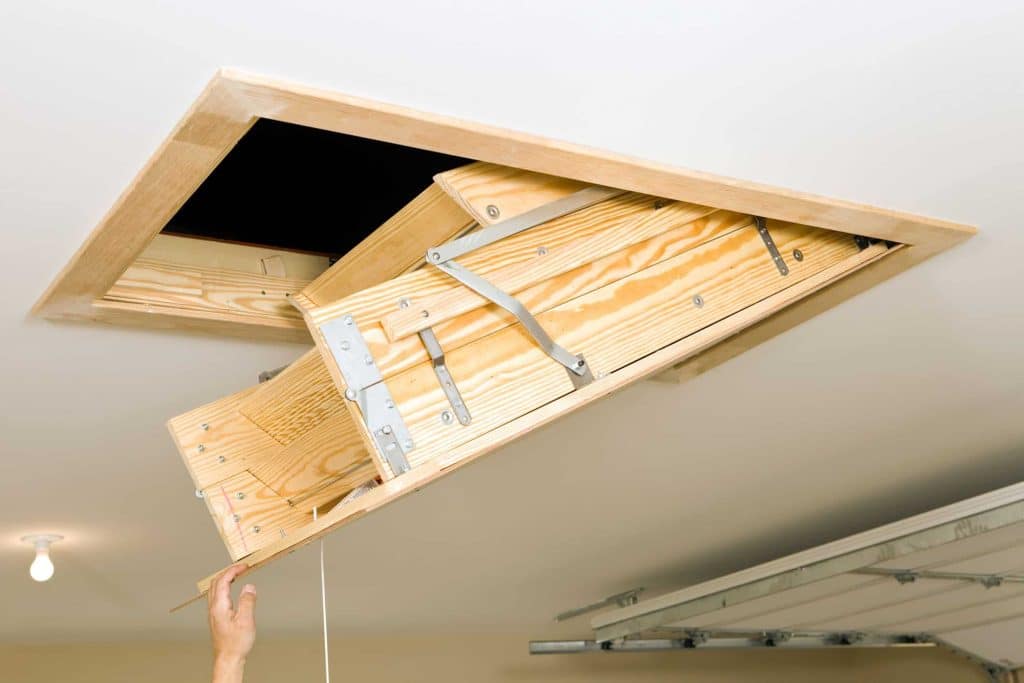
Every commercial building or household attic has an attic access door that helps you conceal less appealing plumbing, electrical, and HVAC facilities and secure available storage space. Moreover, it enables maintenance specialists or repair technicians to access these hard-to-reach areas easily.
In this article, you’ll discover the three commonly used attic access panels, helping you choose and purchase according to the attic’s necessities or your preferences wisely. The blog post will also discuss the best insulation methods to maintain your home’s temperature and recommend locking mechanisms to implement extra security in the utmost area of your place.
Here are three attic access doors and panels that you can consider purchasing next:
1. Simple Attic Hatch (Scuttle Hole)
Typically, you’ll see simple attic hatches, also known as scuttle hole access doors in houses. It’s a rectangular or, at times, square-shaped panels type that’s easily removable. You can immediately access the attic area by pushing up the ceiling cut-out and climbing through your fixed stairs or attached ladders.
How to install?
- Step 1: Measure and mark the square or rectangular area of your ceiling.
- Step 2: Create an opening by following and cutting the marked measurements into your drywall ceiling.
- Step 3: Make a wooden frame for your attic opening. If you keep the cut ceiling portion undamaged, you can utilize it as your simple hatch door. You can also use foam board or smooth panels to conceal your attic space.
- Step 4: Tightly secure the hatch opening with screws.
- Step 5: Let the finished door sit flush on the built frame.
2. Pull-down stair attic access door
The pull-down stair attic access door will best suit your needs if you’re looking for more convenient, neat, and aesthetically pleasing attic access panels. Panels like this contain a spring-loaded door leaf that, once pushed up and the cord gets pulled, its built-in stairs will pop up.
After usage, you can easily fold it back up, granting a clear hallway space again. Aiming to strongly assists you as you climb in and out of your attic, its stairs usually consist of metal or wood durable materials.
How to install?
- Step 1: Cut a rectangle-shaped opening from your ceiling, or enlarge the previously carved doorway to accommodate the larger door.
- Step 2: Create a wooden frame fitting to the cut opening.
- Step 3: Install the door to the frame’s bottom part using the metal hinge packed with the stair mechanism.
- Step 4: Attach the tool that will make your stairs open and retract.
- Step 5: Assemble the stairs and tightly secure them to your doors, cables, and pulleys.
- Step 6: Insert a pull into the exterior.
3. Knee-wall door
The Knee-wall door is yet another attic access panel that grants economical entry to your home or commercial establishment’s attic. However, this attic access door type is available mid-height on short and vertical walls rather than the usual ceiling placement.
If you plan to use your small attic area as a loft, storage area, or bedroom with a sloped ceiling, the knee-wall access panel best fits your needs according to your small environment. Consider installing fire-rated ceiling access doors to add fire assistance benefits to your storage attics.
How to install?
- Step 1: Cut a rectangular opening into vertical walls between studs
- Step 2: Complete the frame by securing horizontal placing of wood trim and door jambs-based boards at the top and bottom of the panels opening.
- Step 3: Create a knee-wall door leaf through cut-down interior words, or you can customize a plywood panel.
- Step 4: Tightly attach hinges at the back of your door on either vertical stud’s inside or adjacent one edge.
An attic gives you the power to insulate your house and make it easily adaptable to the temperature and seasons. Proper insulation in your attic brings tons of benefits inside your house environment, including balancing your place’s temperature and saving some energy costs. Two insulation types that are important for you to perform:
- FRAME INSULATION: When insulating frames, you can utilize weatherstripping to seal small openings around the frame of your attic access panel. You’re free to attach it on all sides of the frame, and it will sit comfortably against the door leaf once closed.
- DOOR INSULATION: On the other hand, you can use foam boards when insulating doors. Apply it at the back of your door or any product squeezed with polystyrene layers.
To prevent unauthorized entry into your building or apartment complex, check out these lock or latch mechanisms that can add an extra layer of security at the top of your establishments:
- Buckle latches or lockable draw catches
- Hook and eye latches
- Deadbolt locks
- Sliding security chain locks or door chains
Concealment, security, and ease
Attic access doors are your gateway to your meant-to-be secluded area. With these panels, you can effortlessly access the space and take necessary actions such as cleaning, repairing, or maintenance. It also protects your concealed duct facility system from harmful debris and adds another security option for your establishment’s top area.







